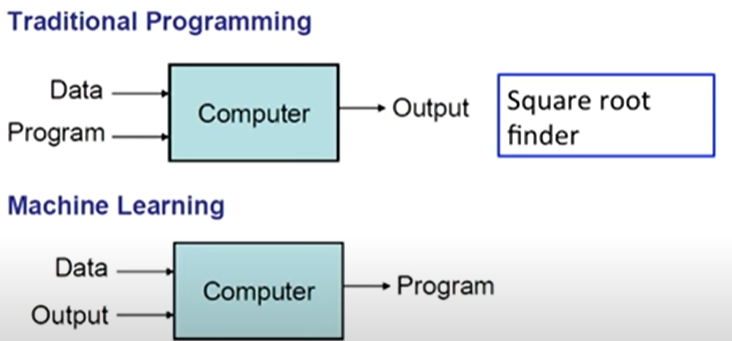Artificial intelligence for beginner  Edit
Edit
What Is Artificial Intelligence
Artificial Intelligence is the branch of computer science which deals with making computers do things at which at the moment humans are better. The term Artificial Intelligence was first coined by John McCarthy in the year 1956, he defined AI as 'The science and engineering of making intelligent machines'. AI should be able to perform tasks that require human intelligence such as decision making, object detection, solving complex problems and so on.
Stages of AI
- Artificial Narrow Intelligence (Weak AI): is the stage of Artificial Intelligence involving machines that can perform only a narrowly defined set of specific tasks. No thinking ability, Example Siri, Alexa, Self Driving Cars
- Artificial General Intelligence (Strong AI): There are currently no examples of strong AI. This is the stage in the evolution of AI wherein Machines will possess the ability to think and make decisions just like us humans
- Artificial super intelligence: Stage of AI where the capability of computers will surpass that of human beings
Types of AI
AI can be categorized into 4 types based on functionality
- Reactive Machine AI: Machines that operate solely based on the present data and take into account only the present situation. They can only perform a narrow range of predefined tasks. Reactive AI machines cannot form inference from the data to evaluate their future actions
- Limited Memory AI: Can make informed and improved decisions by studying the past data from its memory. has temporary memory to store past experience and hence evaluate future actions. Eg self driving cars
- Theory Of Mind AI: mainly focus on emotional intelligence so that human beliefs and thoughts can be better comprehended
- Self Aware Artificial Intelligence: Includes machines that have their own consciousness and become selfaware
Branches of AI
- Machine Learning is a technique to achieve AI, its used to interpret, process and analyze data. Machine learning learn from data and experience through algorithms. Machine learning there are supervised, un supervised and reinforcement learning.
- Deep Learning process of implanting neural network on high dimensional data to gain insights and form solutions.
- Robotics is about focusing on different branches and application of robots.
- Expert Systems learns and reciprocates the decision making ability of a human expert.
- Fuzzy Logic based on principle of degree or truth.
- Natural Language Processing is the field of AI which translates human voice to be able to be understood by a machine. Its about processing large amount of human language, to make sense of it and to extract useful information. Eg Siri
Machine Learning
The field of study that gives computers the ability to learning without being explicitly programmed. Difference between a traditional programming and machine learning

In machine learning approach you give the computer data sets of input and output and you want the machine learning algorithm to create a program, a program that you can use to infer new information. Ideally learn the model for the data you can use to label any other instance of the data. The first question I had was how should the computer learn ?. Write program that can infer useful information from implicit patterns in the data, have an algorithm figure out what those implicit patterns are and use those patterns to generate a program you can use to infer new data about what ever you are trying to do.
Steps
- Give system some training data
- Inference Engine Write code to infer something about the process that generated that data
- Use that to make predictions about things you haven't seen before
Supervised & Un Supervised Learning
Supervised Learning given a set of feature label pairs, find a rule that predicts the label associated with a previously unseen pair.
Un Supervised Learning given a set of feature vectors (without label) group them into natural clusters ( or create label for groups ).
What is a model
Model is something that can help you understand something that has happened in the past or predict the features.
Types of models
- Optimization Models : here you start with an objective function that needs to be maximized or minimized. Optimization function has a set of constrins it has to obey. Eg Minimize travel time between two cities with constrains like max 500 Rs, Reach desination before 9:00 Am. Knpsack problem, 0/1, Continous. Bruteforce algorithm, Greedy Algorithm
- Statistical Models :
- Simulation Models :

